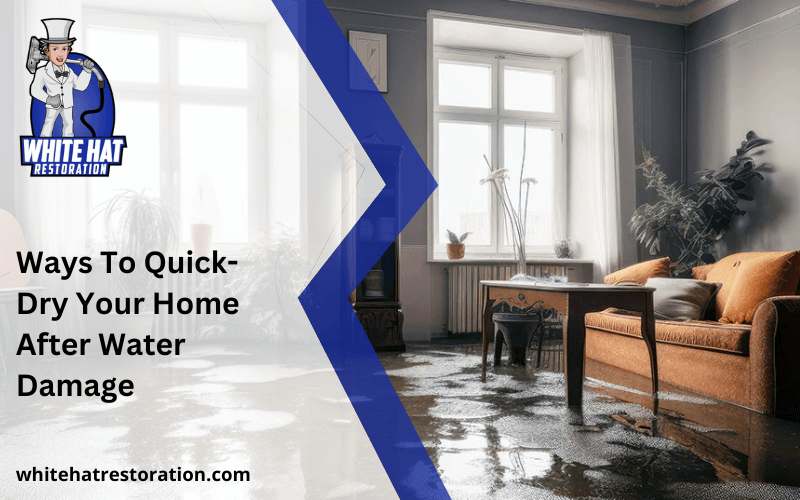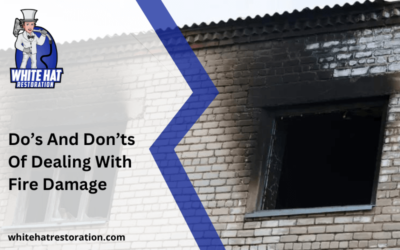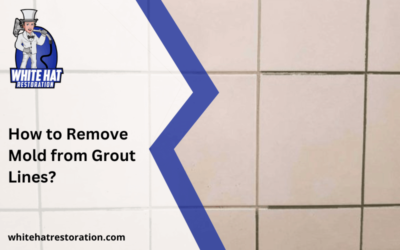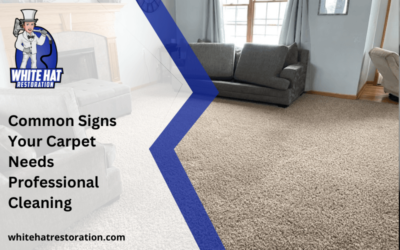Water damage can strike at any time, whether from a burst pipe, flooding, or a leaky roof. From damaging your property to unleashing mold and other bacteria in your home, its consequences can literally surpass your expectations.
If your home happens to become a victim of such mishaps, it is essential to act fast to prevent further damage and minimize costs. So, in this blog post, we’ll share some quick and effective ways to dry your home after water damage to ensure you get your property back to normal as early as possible.
Five Simple Ways To Dry Your Home After Water Damage
1. Remove Standing Water
So, first and foremost, locate the source of the damage and get it shut. Some of the most common locations for water damage in your house include the sink, basement, attics, and bathrooms. So make sure to inspect them prior before looking out for other places.
Once you’ve identified the source, start removing the standing water using a wet/dry vacuum cleaner. To repair your home after water damage, removing standing water should be your priority above anything else, as even a small amount of unclean water can impede further drying process.
Caution: Do not use ordinary vacuum cleaners to remove water, as they can actually spread the water or may end up in a damaged state. Wet/dry vacuums, on the other hand, are specifically made to suck up large amounts of water from the floors except for corners where you can utilize mops or small buckets.
2. Air Out The Space
The second step in line comes removing moisture from the air, especially in the area where water damage has occurred. The most simplest way to do so is by opening all windows or doors and allowing natural air to penetrate and circulate your home.
Allowing this serves two purposes. First, it helps ventilate the area by removing moisture, preventing it from condensing on surfaces or remaining trapped in enclosed spaces.
Second, it helps improve indoor air quality, as stagnant air after water damage can become extremely musty or unpleasant. Ventilating the area removes this musty odor from your home and allows fresh air to persist.
3. Set Up A Table Fan
For more thorough and efficient drying, you can place a table fan in areas affected by water damage. Table fans are known for expediting the evaporation process.
And secondly, they help distribute the air evenly, ensuring all water-affected surfaces like walls or carpets dry uniformly, as uneven drying patterns can lead to warping, buckling, or other damage to materials.
4. Turn On The Dehumidifiers
In addition to table fans, you can also use dehumidifiers, especially to prevent issues like rusting of metal parts, swelling of wooden furniture, and delamination of laminated surfaces, all of which can occur if not dried quickly.
But before using dehumidifiers, make sure the dehumidifier has the capacity to handle the size of the affected area and that it is placed centrally or in areas with high moisture concentration for best results.
5. Separate Water-Damaged Items
It’s not just the standing water responsible for moisturizing your water-affected space but also the items affected by it. Water-damaged items in close contact can transfer moisture to each other, leading to additional damage.
For example, a wet oriental rug can damage or swell the carpet fibers or a wet carpet can cause the hardwood floor to warp or rot. Separating these items minimizes the risk of this secondary damage and keeps health issues at bay.
By health issues, we mean some of the most common health risks posed by unclean water, such as mold or mildew and allergies. And that is something you’ll surely like to avoid.
Wrapping Words!
Water damage is a common occurrence in almost every home. But despite being common, its consequences are something that a homeowner (including you) will certainly like to avoid at any cost, be it to prevent further damage to the property or mold and viruses to thrive.
So to minimize the risk of post-water damage repercussions, it is essential to quick-dry the area using the methods described in this comprehensive blog and protect your property from damage beyond severity.




